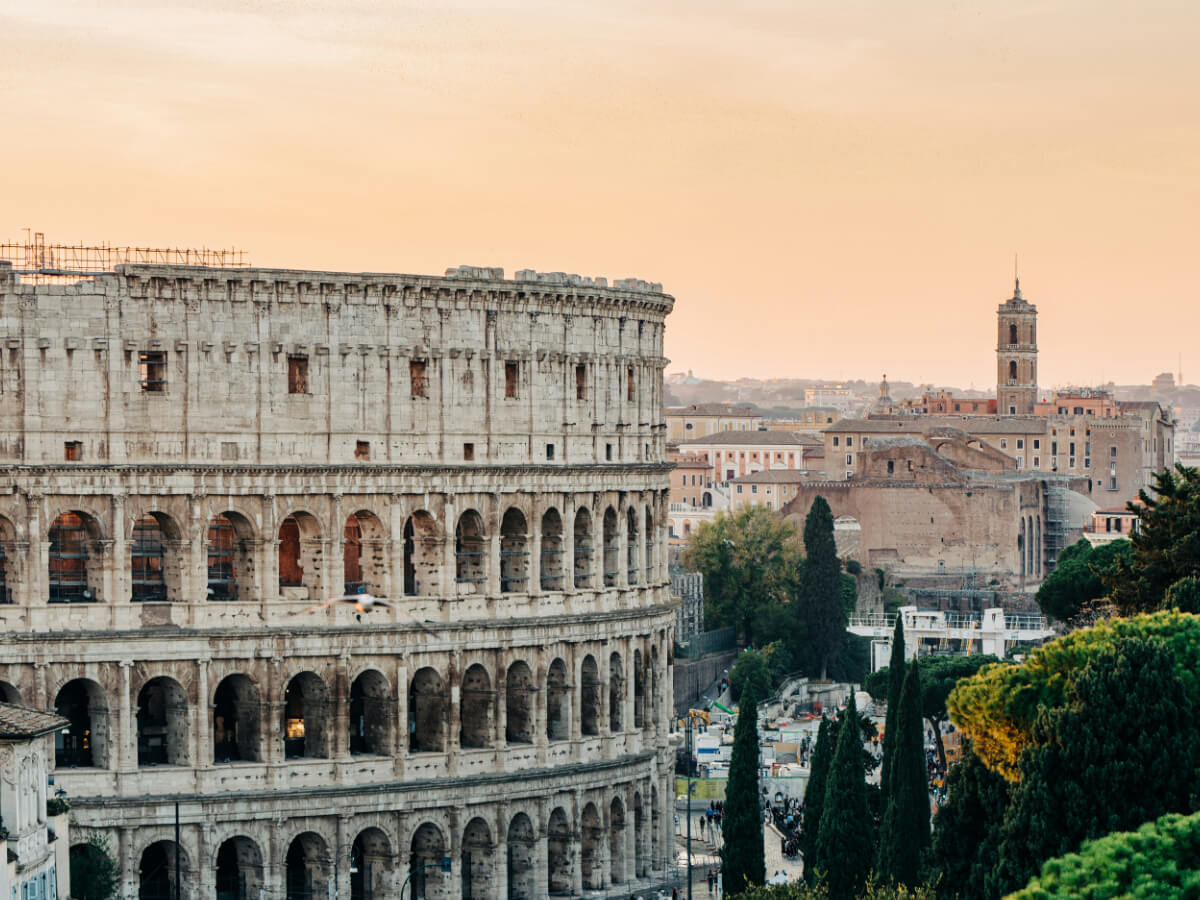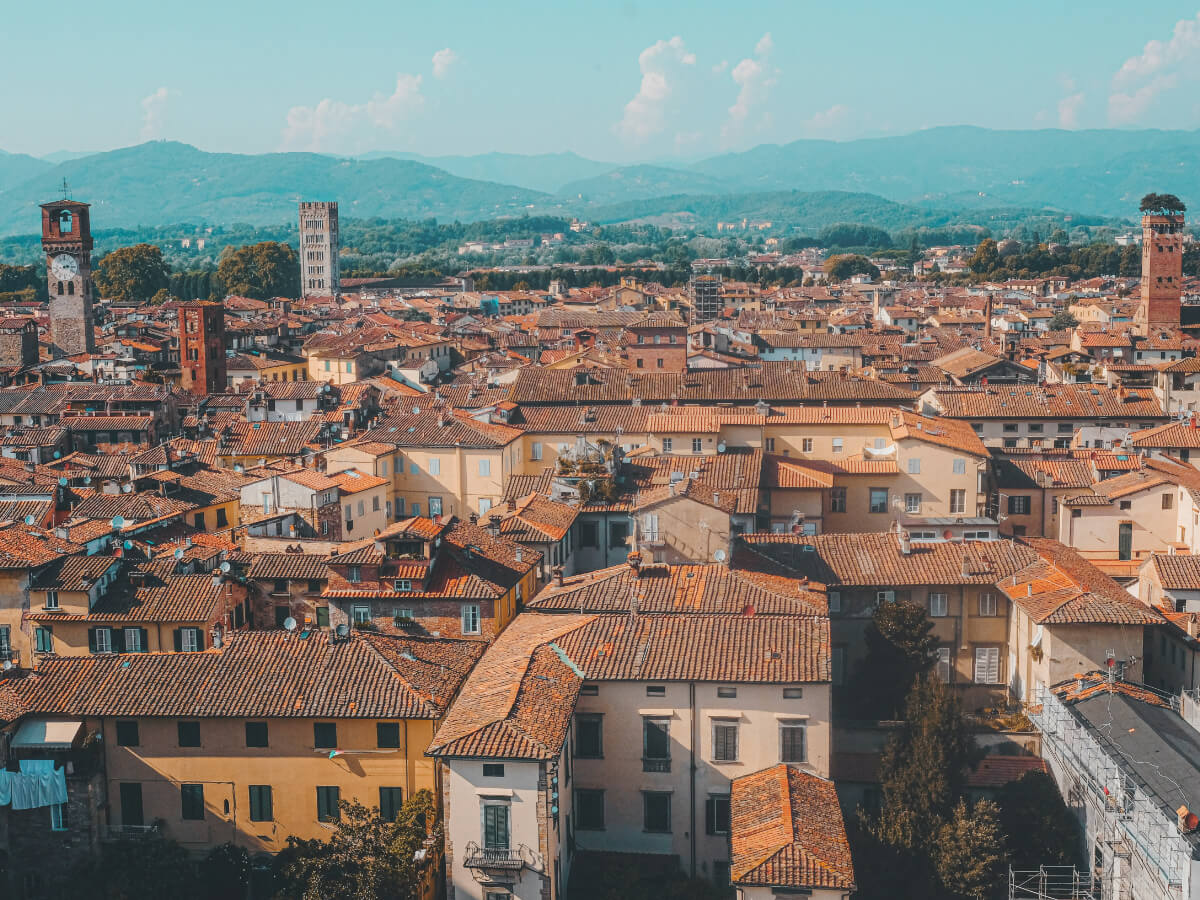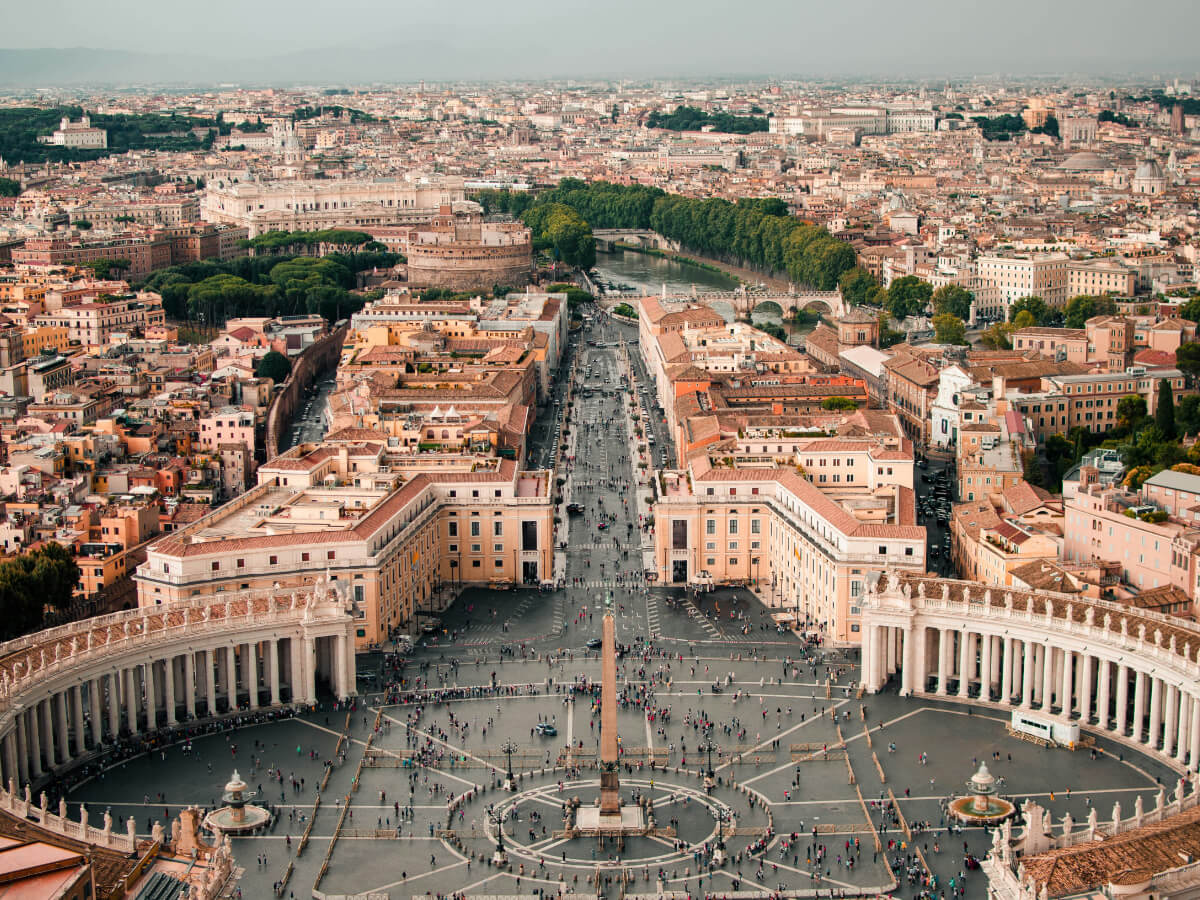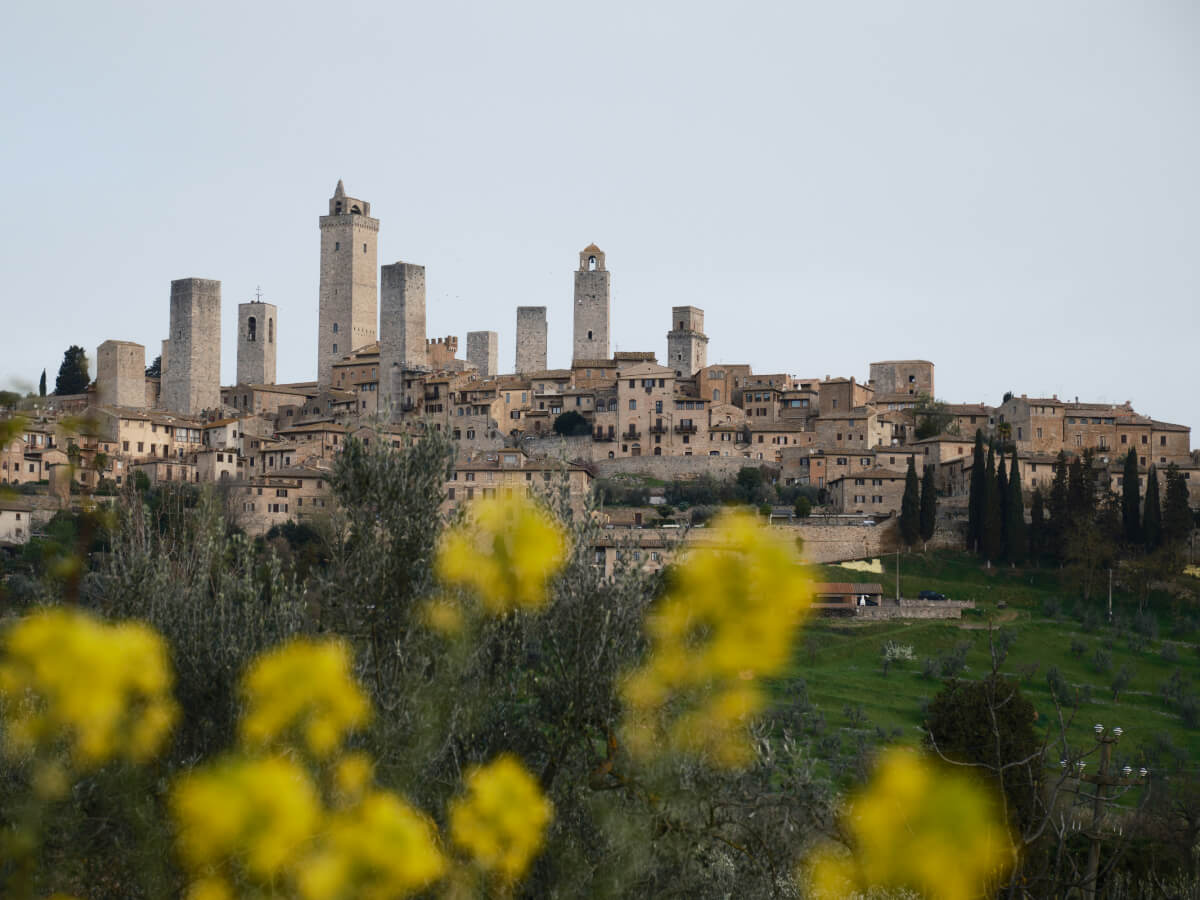For those looking for a transformative adventure, the Via Francigena 2026 is the ultimate choice. This historic pilgrimage to Rome isn’t just a walk, it’s an opportunity to reconnect with yourself, explore centuries of Italian history, and enjoy the country’s world-famous food and views.
As one of the world’s great pilgrimages, the Via Francigena appeals to all ages. Those aged 45 to 80 will particularly enjoy the walk. Older walkers will enjoy the history, comfortable accommodations with private washrooms, and incredible meals. Furthermore, there are numerous options for self-guided Via Francigena tour, there’s no better time than 2026. Walking this route allows you to slow down, soak in Italy’s beauty, and experience a life-changing journey that will stay with you long after you reach Rome.
What Is the Route of the Via Francigena?
The Via Francigena stretches from Canterbury in England to Rome, but the most common sections for modern walkers typically begins at the Great St Bernard Pass in Switzerland and winds through Italy. From here some walkers go all the way to Rome in one season of walking, while many more tackle one or two sections every year.
Descending from the Alps, you enter the Aosta Valley, a region of castles, vineyards, and panoramic mountain views. From there, the trail passes through the Italian provinces of Piedmont and Lombardy, continues across the fertile lands of Emilia-Romagna, and enters Tuscany with its rolling hills, vineyards, and charming medieval towns.
The journey culminates in Lazio, where the Eternal City rises on the horizon. Walking into Rome along this Italian walking pilgrimage trail is a moment of triumph, reflection, and awe—a fitting reward after days of immersive travel.
The History of the Via Francigena
The Via Francigena pilgrimage is steeped in history. Used as early as the Lombard era, it became a vital route for commerce, culture, and spirituality. In 990 AD, Sigeric, the Archbishop of Canterbury, walked the route to receive a papal blessing in Rome and meticulously recorded each stage. His journey became the blueprint for the Via Francigena travelers follow today.
Over the centuries, pilgrims walked this route seeking forgiveness, healing, or spiritual renewal. Monasteries, villages, and towns flourished along the trail, offering hospitality that continues today. On a Via Francigena self-guided tour, you experience this living history, staying in charming local accommodations and following in the footsteps of countless travelers before you.

What’s New on the Via Francigena in 2026
2026 will be a remarkable year to walk the Via Francigena. With improvements in signage, trail infrastructure, and accommodation services, 2026 will be easier and more enjoyable time to trek the Via Francigena than ever.
Several provinces along the trail are planning cultural events to coincide with pilgrim traffic, including food festivals in Tuscany, historical celebrations in Emilia-Romagna, and guided heritage experiences in Lazio. This means your Via Francigena walk can combine natural beauty, culture, and immersive local experiences.
Via Francigena vs. the Camino de Santiago
Many travelers compare the Via Francigena to the Camino de Santiago, and it’s easy to see why. Both are historic pilgrimages in Europe, but the Via Francigena offers something different: fewer crowds, varied landscapes, and a more intimate walking experience.
While the Camino can feel crowded, especially in summer, the Via Francigena pilgrimage allows for quiet reflection. You can walk for hours without seeing another pilgrim, yet still enjoy reliable accommodations, delicious meals, and local hospitality.
The scenery is unmatched—alpine peaks, rolling Tuscan vineyards, Umbrian hills, and the approach to Rome’s skyline make every step memorable. For travelers seeking a less-traveled, historically rich alternative to the Camino, the Via Francigena is ideal.

Why Walk the Via Francigena?
Each pilgrim has their own reason to walk the Via Francigena, and it’s important to walk your own path, finding joy and renewal that is personal to you. Some of the most common reasons pilgrims walk the Via Francigena are below.
Spiritual Renewal
The Via Francigena is an important walk for Catholics, ending at the Vatican. But the Via Francigena is not only for Catholics or Christians. Even if you’re not religious, the Via Francigena offers a space for reflection. The rhythm of walking, centuries-old churches, and peaceful countryside provide the perfect environment to reconnect with yourself and your priorities.
Healing from Grief or Loss
Walking has a natural, meditative quality. Many pilgrims describe the journey as profoundly therapeutic, with ample space to process grief. Whether coping with loss or life transitions, the Via Francigena gives you space to process emotions while moving through stunning towns and countryside.
Life Changes and New Beginnings
Exploring History and Culture
Few walking holidays in Italy offer such direct contact with history. You’ll pass Roman roads, medieval towns, Renaissance architecture, and centuries-old monasteries. Each Italian province tells its own story, turning your Via Francigena self-guided tour into a living history lesson.
Food, Wine, and Culinary Delights
From alpine cheese in Aosta to pasta in Emilia-Romagna, Chianti wine in Tuscany, and classic Roman dishes in Lazio, this is a journey for the palate as well as the soul. There is nothing better than walking all day in the glorious countryside, then coming into a charming Italian village or town in the afternoon, knowing you will have a meal you’ll remember for decades. Experiencing regional Italian cuisine is a highlight of any Via Francigena walking holiday.

What Is a Self-Guided Via Francigena Walking Holiday?
A self-guided walking holiday in Italy combines the independence of solo travel with the support of a professionally arranged itinerary. You receive detailed maps in the form of a GPS app that even shows you your location on the map, booked accommodations, breakfasts, and luggage transfers, allowing you to walk unencumbered and enjoy the journey. Even better, you have a local team that is available to answer any questions while you are on your trip!
Self-guided travel is growing in popularity, especially for travelers between 45 and 80 years of age, who find this type of travel ideal. On a self-guided trip you can start the day whenever you like, set your own pace, stop when you like, and fully immerse yourself in Italy’s countryside, towns, and culture without worrying about logistics.
Why Book a Self-Guided Via Francigena Tour?
Booking a self-guided Via Francigena tour provides several advantages:
- Peace of Mind: No need to worry about where you’ll sleep or if your bags will arrive. Everything is planned ahead of time.
- Flexibility: Walk at your own pace, exploring hidden villages and scenic detours.
- Comfort: Luggage transfers mean you only carry a light daypack.
- Authenticity: Stay in family-run hotels rather than tourist hotels.
- Customization: You are in control, and you can add in rest-days, or upgrade accommodations to more luxurious options.
- Safety and Support: Access to assistance if needed, so you can relax completely.
This approach ensures that the focus remains on the experience itself—savouring the views, local culture, food, and quiet moments along the trail.

Self-Guided Via Francigena Tours
At My Via Francigena we specialize in self-guided tours in the Italian portion of the Via Francigena.
Here are the different stages of the Via Francigena where we offer self-guided walking tours. The tours are listed in order from the Great Saint Bernard pass to Rome.
- Great Saint Bernard Pass to Ivrea: This wonderful self-guided walk takes you from the Alps to Aosta and into Piedmont.
- Ivrea to Pavia: Savour traditional Northern Italian cuisine on this section of the Via Francigena.
- Pavia to Fidenza: Marvel at historical sites like the Cistercian Abbey of Chiaravalle della Colomba and Fidenza’s magnificent cathedral.
- Fidenza to Pontremoli: This stage of the Via Francigena takes you through the Apennines to Pontremoli, offering an immersive experience of nature, history, and spirituality
- Pontremoli to Lucca: This stage combines lush countryside, medieval villages, coastal trails, and the artistic heritage of Tuscany, offering an unforgettable adventure through one of Europe’s historic pilgrimage paths.
- Lucca to Siena: This is classic, stunning Tuscany. This stage of the Via Francigena is a feast for the senses as you delight yourself with the sights, sounds, tastes, and scents of the wonderful Tuscan countryside.
- Siena to Montefiascone: The stage blends Tuscany’s iconic cypress-lined paths, panoramic views, and picturesque hamlets with cultural treasures like the imposing fortress of Radicofani and scenic Lake Bolsena
- Montefiascone to Rome: Walk between lovely historic villages and through scenic Lazio countryside before reaching the incomparable city of Rome.
Make 2026 your year to explore Italy by Foot
Walking the Via Francigena 2026 is more than a trip—it’s a chance to step into history, embrace the Italian countryside, and reconnect with yourself. This bucket list walking holiday is an opportunity to explore, reflect, and transform.
Whether seeking spirituality, healing, cultural immersion, or culinary delights, the Via Francigena offers all of this and more. Book your self-guided Via Francigena tour, lace up your boots, and prepare to walk one of Europe’s most beautiful and historic routes. 2026 is your year to experience the Via Francigena at its best.
